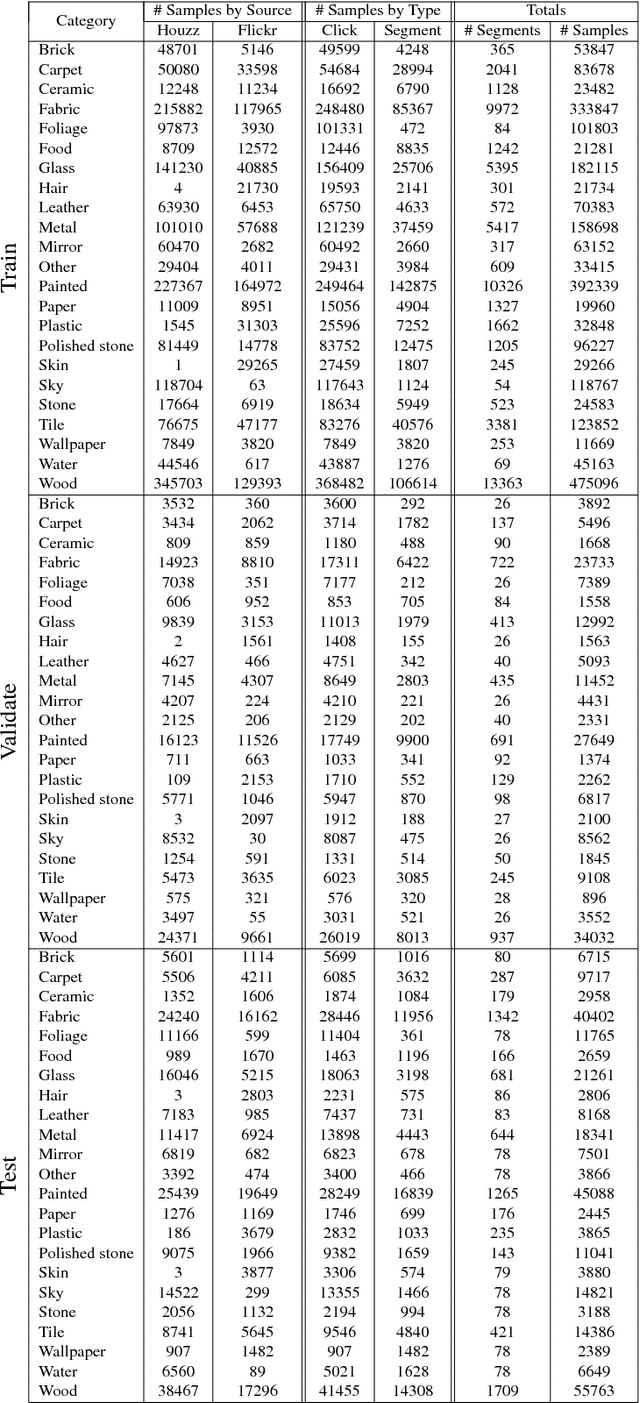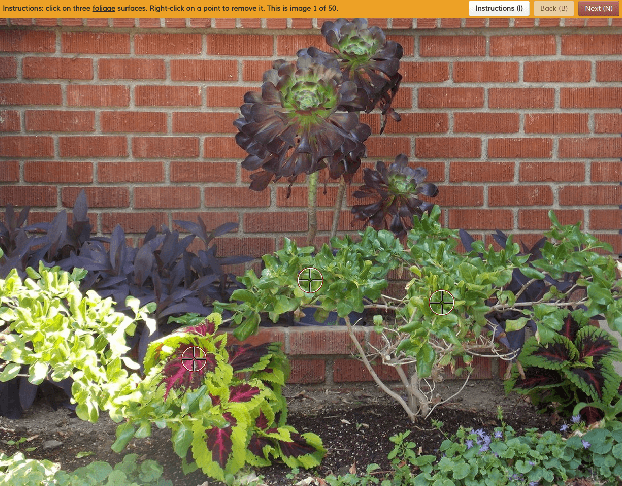Material Recognition in the Wild with the Materials in Context Database
Paper and Code
Apr 14, 2015



Recognizing materials in real-world images is a challenging task. Real-world materials have rich surface texture, geometry, lighting conditions, and clutter, which combine to make the problem particularly difficult. In this paper, we introduce a new, large-scale, open dataset of materials in the wild, the Materials in Context Database (MINC), and combine this dataset with deep learning to achieve material recognition and segmentation of images in the wild. MINC is an order of magnitude larger than previous material databases, while being more diverse and well-sampled across its 23 categories. Using MINC, we train convolutional neural networks (CNNs) for two tasks: classifying materials from patches, and simultaneous material recognition and segmentation in full images. For patch-based classification on MINC we found that the best performing CNN architectures can achieve 85.2% mean class accuracy. We convert these trained CNN classifiers into an efficient fully convolutional framework combined with a fully connected conditional random field (CRF) to predict the material at every pixel in an image, achieving 73.1% mean class accuracy. Our experiments demonstrate that having a large, well-sampled dataset such as MINC is crucial for real-world material recognition and segmentation.
 Add to Chrome
Add to Chrome Add to Firefox
Add to Firefox Add to Edge
Add to Edge